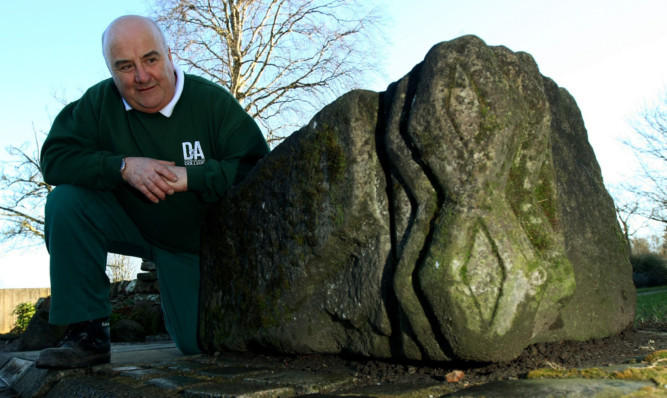For more than 50 years, visitors to Dundee and Angus College’s Kingsway campus could have been driving past a piece of the city’s history without even noticing.
A large rock in the garden next to the science block is reputed to be part of the city’s famous Royal Arch.
According to college legend, the carved stone is one of three carvings that have been around the campus since the 1960s.
The huge arch was constructed at the Dundee docks between 1849 and 1853 to commemorate a visit to the city by Queen Victoria and Prince Albert in 1844.
With Victoriana having fallen out of favour, it was destroyed in 1964 to make way for the Tay Road Bridge, with the rubble cleared into the docks.
Fragments survived, however, and were recovered during waterfront works in 2010, with one piece presented to the Royal Arch bar in Broughty Ferry.
The arch’s enduring place in Dundee people’s hearts has even led to a new campaign to see it brought back as part of the city’s waterfront work.
How D&A College came to have its mason-carved pieces is less clear, however.
The most easily-identified piece now sits by the science block and measures more than a metre long by half a metre wide and half a metre tall.
It was at one time used as the base of a bench overlooking a water feature where the college refectory now stands.
A second piece of carving was actually incorporated into the water feature and most recently was part of the college’s horticulture department’s award-winning show garden, which took plaudits at last year’s Gardening Scotland and Dundee Flower and Food Festival.
The garden has since been moved to the Children’s Hospice Association Scotland’s Robin House in Balloch, near Loch Lomond.
The third piece is shrouded in even more mystery as only the top is visible the rest being buried in the ground in the former caretaker’s cottage at the campus entrance.
Measuring nearly two metres by one metre, no-one knows how much of the stone is buried. That mystery at least may not remain unsolved for much longer as the garden and building is to be demolished later this year and the carved stone is to be completely excavated.
Among those keen to see this carving unearthed is Willie Barber, who is one of the longest-serving members of college staff and is well-versed in the lore of these stones.
Now head gardener, it was Willie who dismantled the original water feature.
“I’ve walked past these stones every day of my 34 years at college so they are almost old friends,” he said. “I remember dismantling the water feature and the Royal Arch stone, unfortunately, had become damaged.
“While there is no documentation to prove that these carved stones are part of the historic Royal Arch, that’s what I was told when I started here in 1980
“Davie Taylor, the head gardener, who retired that same year, told me the story and he had been around since the opening of the Kingsway premises.”
The college would welcome any further information about the history of the stone pieces and how they came to be within the grounds.
